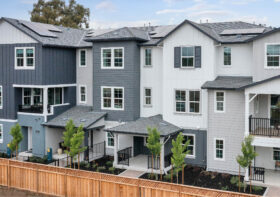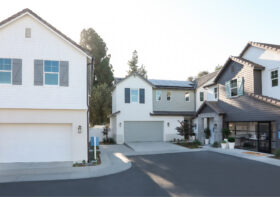Big Adventures in Tiny Spaces

Before I was married, I lived alone in a 300 square foot studio apartment on Balboa Island, which was just the right size. Once engaged, my 6’-2” soon-to-be-husband felt that living together in such a tiny space was not the wisest way to start our marriage, so we found a townhome with a bit more “elbow room”. Several years—and a couple of kids—later, we all took a vacation to Japan, where we rented apartments in Kyoto and Tokyo. The experience gave me a glimpse into what “micro-living” really feels like.

No larger than a standard US hotel room, the main living area of each unit served multiple functions such as lounging, sleeping, and dining. Furniture was moveable, collapsible and lightweight—a foldable table served as desk, dining table and nightstand. Our small Kyoto abode utilized traditional tatami mats that allowed sitting on the floor during the day, then sleeping on portable foam mattresses at night. For our family of four, we shared two-bed mats and slept next to each other on the floor—my kids thought we were camping! In our Tokyo apartment, this concept was modernized with cushioned vinyl flooring, and the space-saving twin-sized bed converted into a double, fitting perfectly into a day-lit alcove (shown above).

Unlike our American phrase, “kitchens are the heart of the home,” the Japanese kitchens were often hidden away in hallways and closets. With over 100,000 registered restaurants, the most Michelin-starred restaurants in the world, and countless vending machines dispensing hot meals, eating out instead of cooking at home is very common in Tokyo. It’s no wonder our entire kitchen fit inside a cabinet! A small sink, mini-refrigerator, and a built-in exhaust fan were all standard features, but the stove was not: in one kitchen, a portable hot plate was stored under the counter, freeing up the valuable work surface. We didn’t try making dinner in any of the kitchens, but we did discover they’re equipped enough to make a bowl of instant ramen.
The best-known feature of Japanese bathrooms may be high-tech toilets (self-cleaning with heated seats and bidets), but I found their efficient use of space and water to be the most noteworthy. The typical bathroom was not much larger than an airplane restroom with a tub/shower added on—in one case, it was possible to reach out the bathroom door while sitting on the toilet! Other bathrooms were prefab with the tub, sink, counter, walls, ceiling, and floors all in one piece. Some had only one set of plumbing fixtures, such as a swivel faucet, that served both the sink and the bathtub, while one toilet had a sink built into the back that allowed the sink’s wastewater to be used for flushing.

Staying in these Japanese urban residences showed me how efficiently a very small home can function—even for a family of four. The trip gave me a sense of what life could be like now, had we continued living in my tiny Balboa Island studio. That said, I truly appreciate our three-bedroom home with all of its “elbow room”!




Leave a Reply